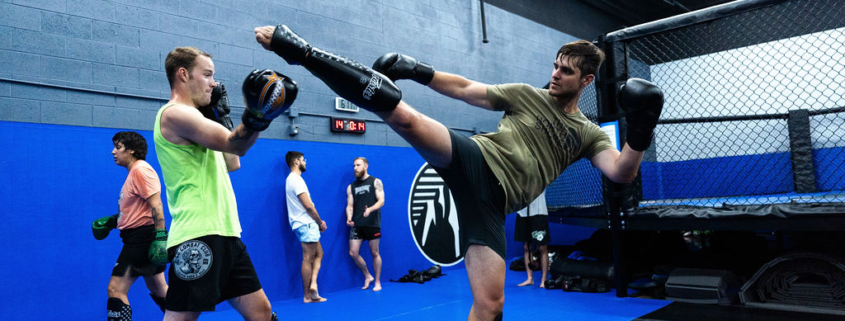Live sparring is one of the most valuable aspects of martial arts training. It gives you a chance to test your techniques, improve your timing, and develop your endurance in real-time scenarios. However, it’s not just about throwing techniques and trying to dominate your partner. Learning to control your intensity and emotions during sparring is crucial to not only your progress but also to ensuring the safety and development of your teammates. Here are some key strategies to help maintain balance in your approach to sparring.
Recognize Sparring as a Learning Opportunity, Not a Fight
The first step to controlling your intensity is to understand the purpose of sparring. Sparring is a learning environment, not a fight. The goal isn’t to “win” but to grow, try new techniques, and develop your skills. When you treat sparring like a competition or a fight, your intensity often skyrockets, and so does your likelihood of making mistakes or injuring someone.
Shift your mindset. Every sparring session should be seen as a test run, where you can experiment with strategies in a controlled way. This will not only help you stay calm but also encourage your partner to do the same.
Focus on Technique Over Strength
One of the most common issues in live sparring is over-relying on strength and aggression. When emotions get heated, it’s easy to tense up and force techniques. However, this rarely leads to improvement. Instead, focus on executing proper techniques with good timing and precision.
This approach not only makes your sparring sessions more productive but also naturally keeps your intensity in check. When you’re focused on good form and movement rather than overpowering your partner, your emotions stay more balanced, and the sparring session becomes a technical exchange rather than a battle of strength.
Practice Self-Awareness
In the middle of a sparring round, it can be easy to get caught up in the moment. A well-placed strike or a tight submission attempt might trigger a burst of adrenaline, leading to heightened intensity. To control this, practice self-awareness.
Take mental notes during sparring. Are you breathing heavily? Are your movements becoming stiff or aggressive? Is your heart racing? These are signs that your intensity is climbing too high. When you notice these signs, take a step back, breathe deeply, and reset. By practicing this awareness, you’ll learn to control your intensity before it gets out of hand.
Breathe and Stay Relaxed
Breathing is one of the most important tools for managing intensity and emotions during sparring. When you’re tense or overwhelmed, your breathing becomes shallow, feeding into a cycle of stress. Focus on slow, deep breaths throughout the round. Proper breathing not only improves your endurance but also helps keep your mind calm and your emotions in check.
Also, remind yourself to stay relaxed, especially during exchanges. If you catch yourself tensing up, actively release that tension. Relaxed muscles move faster and more efficiently, and they also help you remain mentally composed.
Control Your Ego
Sparring can sometimes trigger emotional responses, especially if you’re feeling outmatched or overwhelmed. You may feel a surge of frustration if a partner keeps getting the better of you or lands a clean technique. The key is to keep your ego in check. Understand that losing or making mistakes during sparring isn’t a reflection of your abilities; it’s a normal and necessary part of the learning process.
Instead of letting your ego fuel negative emotions, shift your perspective. If your partner lands a solid technique, view it as an opportunity to learn, not a reason to get emotional. Stay humble and recognize that every sparring session, win or lose, contributes to your growth.
Communicate With Your Partner
Open communication with your sparring partner is critical in controlling intensity. Before you start sparring, set the tone for the round by discussing the level of intensity you both want to work at. If things start getting too heated, don’t be afraid to call a quick break or slow things down. Mutual understanding helps ensure that both you and your partner remain safe and focused on improving.
Also, if your partner is escalating the intensity and you feel uncomfortable, be vocal. Politely ask them to dial it back. Sparring isn’t the time to let ego or pride get in the way of having a productive, safe session.
Embrace the Mental Game
Martial arts is as much about the mind as it is about the body. Live sparring can sometimes bring out anxiety or nerves, which may cloud your judgment and elevate your emotions. Learning to stay composed under pressure is a skill in itself. Treat each sparring session as a way to strengthen your mental fortitude.
Meditation, visualization, and breathing exercises outside of training can help you manage emotions better during sparring. Visualization, in particular, allows you to mentally prepare for sparring situations, which can help prevent emotional spikes when you’re in the heat of the moment.
Know When to Take a Break
If emotions start getting the better of you during sparring, it’s important to recognize when to take a break. Whether you’re frustrated, exhausted, or overly intense, sometimes stepping off the mat for a minute or two can help you reset mentally and physically. A short break can prevent injuries, reduce the risk of emotional escalation, and allow you to come back to the round with a clearer, calmer mindset.
Controlling your intensity and emotions during live sparring is key to becoming a well-rounded martial artist. By focusing on technique, practicing self-awareness, and keeping your ego in check, you’ll not only improve faster but also contribute to a safer, more productive environment for your teammates. Remember, sparring is a tool for growth, not a test of dominance. Keep this in mind, and each session will become a stepping stone in your martial arts journey.





